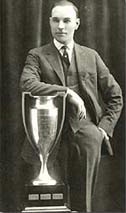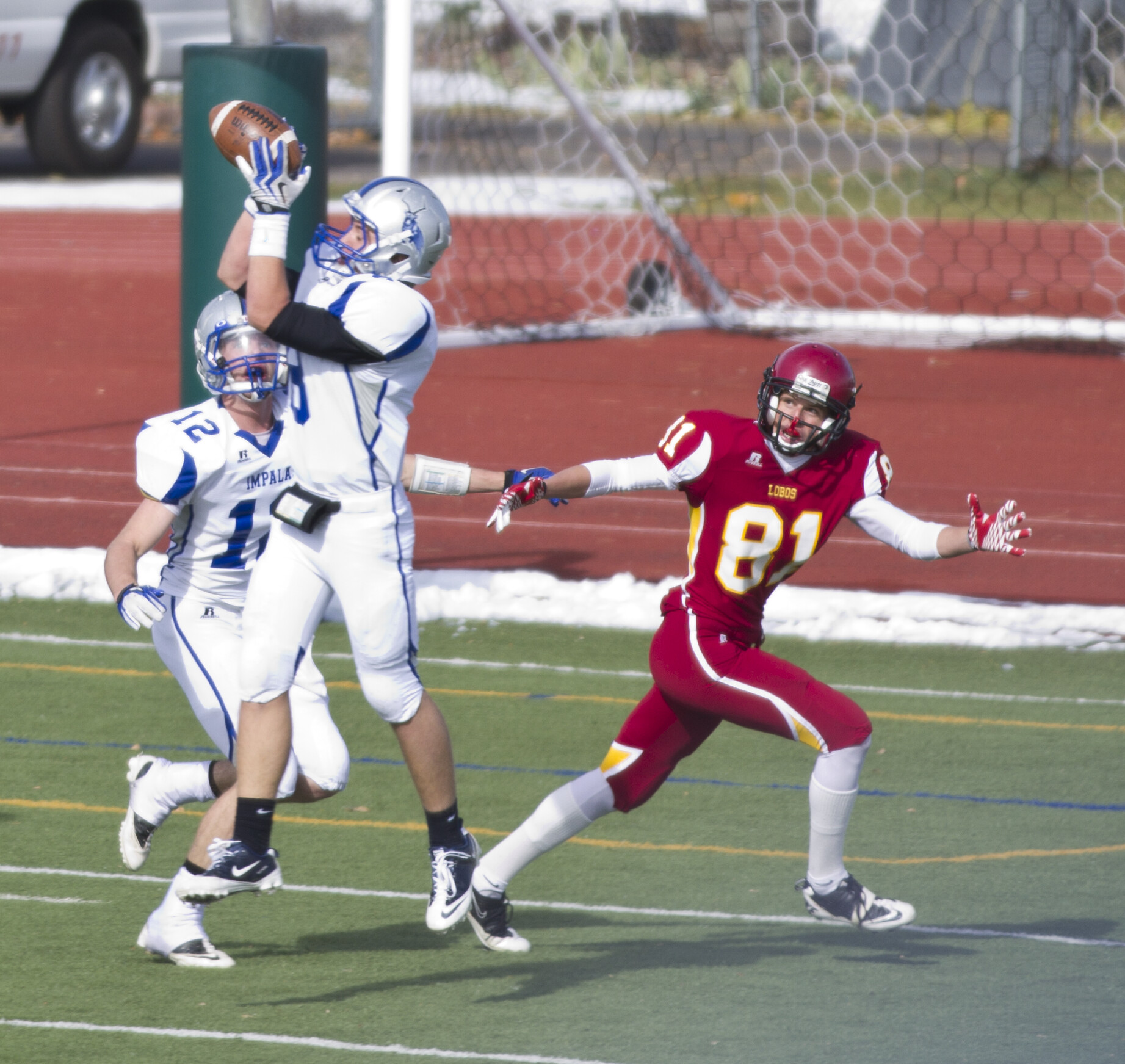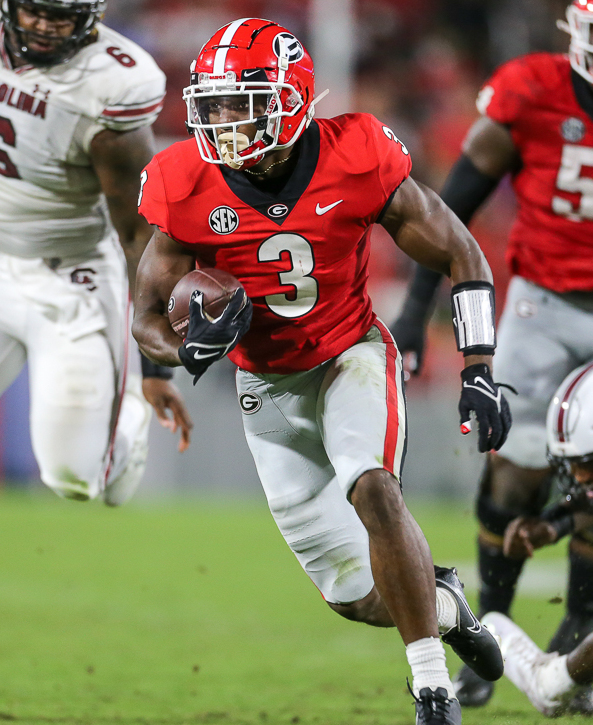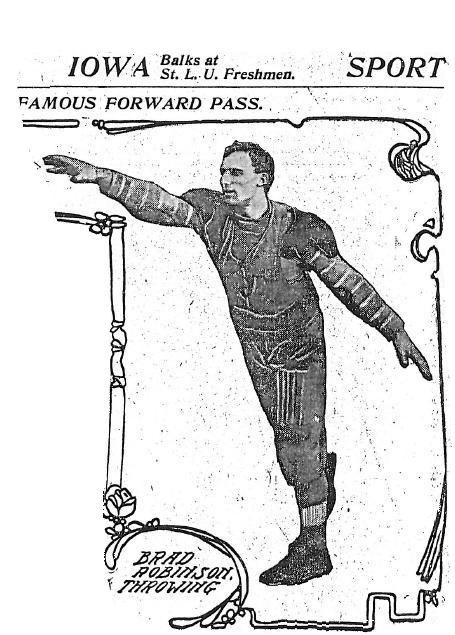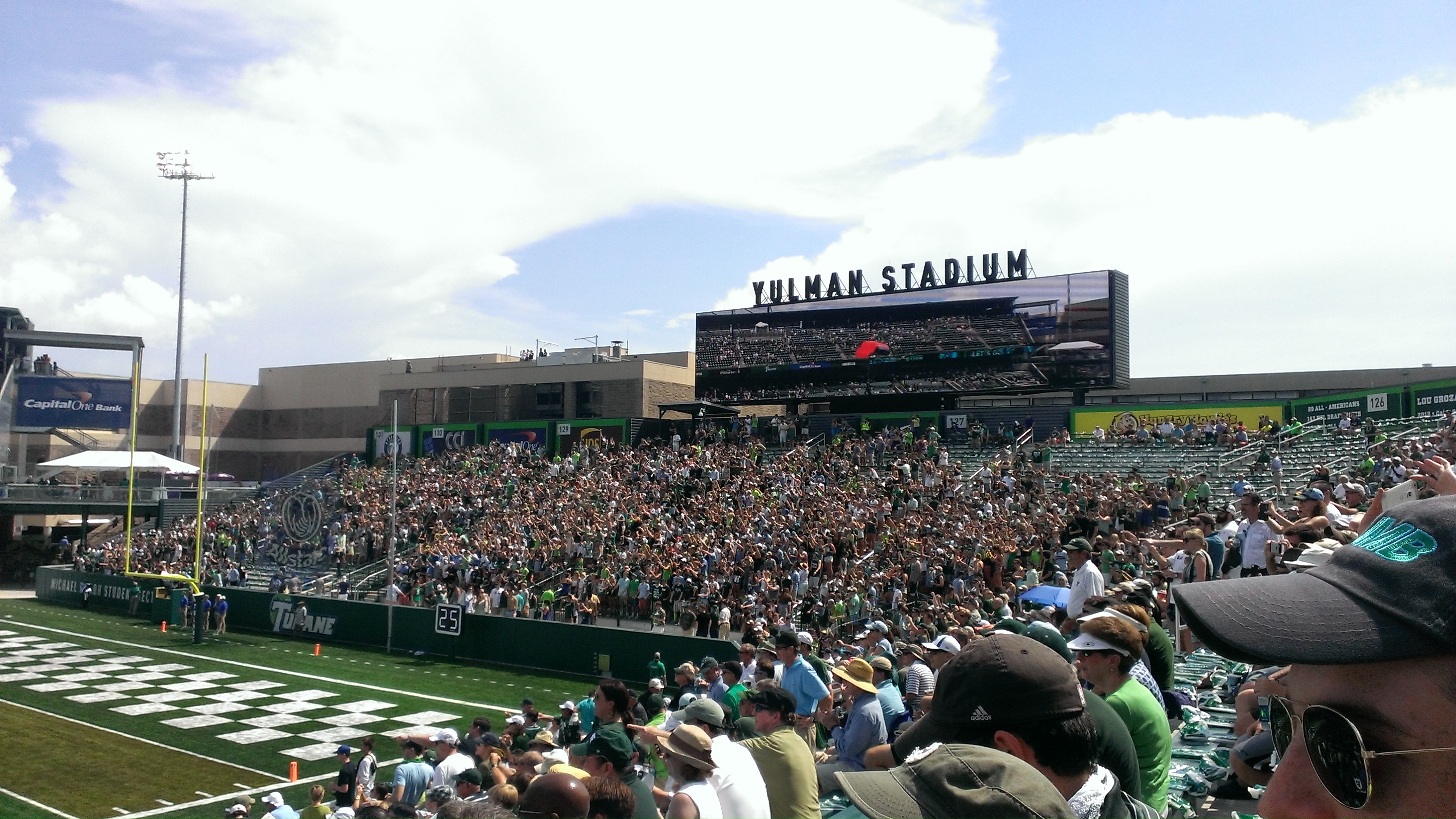|
Tony Branoff
Anthonios "Tony" Branoff (January 1, 1934 – December 20, 2012) was an American football player. He played at the halfback position for the University of Michigan from 1952 to 1955. He was chosen as the Most Valuable Player on the 1953 Michigan Wolverines football team. He was the first sophomore to win the award. He also led the Wolverines in rushing in both 1953 and 1955. Early years in Flint Branoff grew up in Flint, Michigan, and played football for Flint Central High School in 1950 and 1951. He scored two touchdowns, including a 75-yard punt return against Kalamazoo Central High School as a senior. He was selected by the Associated Press to its All-Michigan football team in 1951. He tore cartilage in his left knee against Saginaw Arthur Hill during his senior year in high school, an injury that would affect Branoff throughout his football career. He was always outstanding in the Flint Northern Thanksgiving games. University of Michigan 1952 season Branoff enrolled ... [...More Info...] [...Related Items...] OR: [Wikipedia] [Google] [Baidu] |
Halfback (American Football)
A halfback (HB) is an offensive position in American football, whose duties involve lining up in the offensive backfield and carrying the ball on most rushing plays, i.e. a running back. When the principal ball carrier lines up deep in the backfield, and especially when that player is placed behind another player (usually a blocking back), as in the I formation, that player is instead referred to as a tailback. Sometimes the halfback can catch the ball from the backfield on short passing plays as they are an eligible receiver. Occasionally, they line up as additional wide receivers. When not running or catching the ball, the primary responsibility of a halfback is to aid the offensive linemen in blocking, either to protect the quarterback or another player carrying the football. History Overview Before the emergence of the T formation in the 1940s, all members of the offensive backfield were legitimate threats to run or pass the ball. Most teams used four offensive back ... [...More Info...] [...Related Items...] OR: [Wikipedia] [Google] [Baidu] |
Purdue Boilermakers Football
The Purdue Boilermakers football team represents Purdue University in the NCAA Football Bowl Subdivision (FBS) of college football. Purdue plays its home games at Ross–Ade Stadium on the campus of Purdue University in West Lafayette, Indiana. The head coach of Purdue is Ryan Walters, the 37th head coach in Purdue history. The Boilermakers compete in the Big Ten Conference as a member of the West Division. Purdue had most recently been a part of the Leaders Division of the Big Ten, but moved to the West Division in 2014 due to conference expansion. With a 629–583–48 record at the conclusion of the 2021 season, Purdue has the 55th-most victories among NCAA FBS programs. Purdue was originally classified as a Major College school in the 1937 season until 1972. Purdue received Division I classification in 1973, becoming a Division I-A program from 1978 to 2006 and an FBS program from 2006 to the present. The Boilermakers have registered 64 winning seasons in their history, wit ... [...More Info...] [...Related Items...] OR: [Wikipedia] [Google] [Baidu] |
Iowa Hawkeyes Football
The Iowa Hawkeyes football program represents the University of Iowa in college football. The Hawkeyes compete in the West division of the Big Ten Conference. Iowa joined the Conference (then known as the Western Conference or Big Nine) in 1899 and played their first Conference football season in 1900. They are a Division I Football Bowl Subdivision (FBS) member of the National Collegiate Athletic Association. The Hawkeyes play their home games in Iowa City, Iowa at Kinnick Stadium, with a capacity of 69,250. The Hawkeyes are coached by Kirk Ferentz, who is in his 24th season as the head coach and is the longest current tenured head coach in NCAA Division I FBS. The Hawkeyes have won 13 conference championships (including 11 in the Big Ten). Iowa has never finished a season ranked No. 1 in either the AP or Coaches' Poll, though still claiming five national championships. History Early history Football was first played as a club sport at Iowa in 1872, with intramural games ... [...More Info...] [...Related Items...] OR: [Wikipedia] [Google] [Baidu] |
Most Valuable Player
In team sports, a most valuable player award, abbreviated 'MVP award', is an honor typically bestowed upon an individual (or individuals, in the instance of a tie) whose individual performance is the greatest in an entire league, for a particular competition, or on a specific team. The purpose of the award is recognize the contribution of the individual's efforts amongst a group effort, and to highlight the excellence, exemplariness, and/or outstandingness of a player's performance amidst the performance of their peers in question. The term can have different connotations depending on the context in which it is used. A 'League MVP' is the most valuable player in an entire league, and refers to the player whose performance is most excellent in the league. Similarly, a "Team MVP" is the most valuable player on a team, referring to the player whose team contribution is greatest amongst their teammates. In many sports, MVP awards are presented for a specific match—in other words, ... [...More Info...] [...Related Items...] OR: [Wikipedia] [Google] [Baidu] |
Kickoff (American Football)
A kickoff is a method of starting a drive in gridiron football. Typically, a kickoff consists of one team – the "kicking team" – kicking the ball to the opposing team – the "receiving team". The receiving team is then entitled to ''return'' the ball, i.e., attempt to advance it towards the kicking team's end zone, until the player with the ball is tackled by the kicking team, goes out of bounds, scores a touchdown, or the play is otherwise ruled dead. Kickoffs take place at the start of each half of play, the beginning of overtime in some overtime formats, and after scoring plays. Common variants on the typical kickoff format include the onside kick, in which the kicking team attempts to regain possession of the ball; a touchback, which may occur if the ball is kicked into the receiving team's end zone; or a fair catch, in which a player on the receiving team asks to catch the ball without interference from the kicking team, waiving his entitlement to attempt a return rush ... [...More Info...] [...Related Items...] OR: [Wikipedia] [Google] [Baidu] |
Forward Pass
In several forms of football, a forward pass is the throwing of the ball in the direction in which the offensive team is trying to move, towards the defensive team's goal line. The forward pass is one of the main distinguishers between gridiron football (American football and Canadian football) in which the play is legal and widespread, and rugby football (union and league) from which the North American games evolved, in which the play is illegal. The development of the forward pass in American football shows how the game has evolved from its rugby roots into the distinctive game it is today. Illegal and experimental forward passes had been attempted as early as 1876, but the first legal forward pass in American football took place in 1906, after a change in rules. Another change in rules occurred on January 18, 1951, which established that no center, tackle, or guard could receive a forward pass, unless such a player announces his intent to the referee beforehand that he will ... [...More Info...] [...Related Items...] OR: [Wikipedia] [Google] [Baidu] |
Reception (American Football)
In gridiron football, a reception, also known informally as a catch, is part of a passing play in which a player in bounds successfully catches (receives) a forward pass thrown from a friendly quarterback behind the line of scrimmage. After making the catch, the receiver will then proceed to run towards the opposing end zone carrying the ball and try to score a touchdown, unless the play ends due to him being downed or forced out of bounds. Yardage gained from the passing play are credited to the catcher as his receiving yards. If the pass is not caught by anyone, it is called an incomplete pass or simply an "incompletion". If the pass is caught by an opposing player, it is called an interception. A reception should not be confused with a lateral, also known as a lateral pass or backward pass, which is a legal pass anywhere on the field. In a lateral pass, the ball is thrown backwards or sideways to a teammate with no vector of the pass trajectory towards the opponent's g ... [...More Info...] [...Related Items...] OR: [Wikipedia] [Google] [Baidu] |
Interception
In ball-playing competitive team sports, an interception or pick is a move by a player involving a pass of the ball—whether by foot or hand, depending on the rules of the sport—in which the ball is intended for a player of the same team but caught by a player of the team on defense, who thereby usually gains possession of the ball for their team. It is commonly seen in football, including American and Canadian football, as well as association football, rugby league, rugby union, Australian rules football and Gaelic football, as well as any sport by which a loose object is passed between players toward a goal. In basketball, a pick is called a steal. American/Canadian football In American football and Canadian football, an interception occurs when a forward pass that has not yet touched the ground is caught by a player of the opposing defensive team. This leads to an immediate change of possession during the play, and the defender who caught the ball can immediately attem ... [...More Info...] [...Related Items...] OR: [Wikipedia] [Google] [Baidu] |
Running Back
A running back (RB) is a member of the offensive backfield in gridiron football. The primary roles of a running back are to receive American football plays#Offensive terminology, handoffs from the quarterback to Rush (American football)#Offense, rush the ball, to line up as a receiver to catch the ball, and Blocking (American football), block. There are usually one or two running backs on the field for a given play, depending on the offensive formation. A running back may be a Halfback (American football), halfback (in certain contexts also referred to as a "tailback" — see #Halfback/tailback, below), a wingback (American football), wingback or a Fullback (American football), fullback. A running back will sometimes be called a "feature back" if he is the team's starting running back. Halfback/tailback The halfback (HB) or tailback (TB) position is responsible for carrying the ball on the majority of running plays, and may frequently be used as a receiver on ... [...More Info...] [...Related Items...] OR: [Wikipedia] [Google] [Baidu] |
1953 Ohio State Buckeyes Football Team
{{ColumbusOH-sport-stub ...
The 1953 Ohio State Buckeyes football team represented the Ohio State University in the 1953 Big Ten Conference football season. The Buckeyes compiled a 6–3 record. Schedule Coaching staff * Woody Hayes - Head Coach - 3rd year 1954 NFL draftees References Ohio State Ohio State Buckeyes football seasons Ohio State Buckeyes football The Ohio State Buckeyes football team competes as part of the NCAA Division I Football Bowl Subdivision, representing Ohio State University in the East Division of the Big Ten Conference. Ohio State has played their home games at Ohio Stadium in ... [...More Info...] [...Related Items...] OR: [Wikipedia] [Google] [Baidu] |
Triple Threat Man
In gridiron football, a triple-threat man is a player who excels at all three of the skills of running, passing, and kicking. In modern usage, such a player would be referred to as a utility player. Triple-threat men were the norm in the early days of football, as substitution rules were stringent. Thus, in addition to the need for passing, running, and kicking skills, they were also required to play defense. As injury awareness grew and substitution rules loosened, teams shifted to kicking specialists, which made the triple-threat man obsolete. One of the last triple-threat men in professional football was George Blanda, a quarterback and kicker who last played for the Oakland Raiders of the National Football League in 1975. Danny White, a quarterback and punter, retired in 1989. Since then, non-specialists have placekicked only extremely infrequently in the NFL. One instance occurred when Doug Flutie—also adept at both running and passing as a "scrambling" quarterback& ... [...More Info...] [...Related Items...] OR: [Wikipedia] [Google] [Baidu] |
Tulane Green Wave Football
The Tulane Green Wave football team represents Tulane University in the sport of American football. The Green Wave compete in the Football Bowl Subdivision (FBS) of the National Collegiate Athletic Association (NCAA) as a member of the American Athletic Conference (The American). The football team is coached by Willie Fritz, and plays its home games in Yulman Stadium on its campus in Uptown New Orleans. History Conference affiliations Tulane has been both an independent and affiliated with multiple conferences. * Independent (1893–1894) * Southern Intercollegiate Athletic Association (1895–1921) * Southern Conference (1922–1932) * Southeastern Conference (1933–1965) * Independent (1966–1995) * Conference USA (1996–2013) * American Athletic Conference (2014–present) Championships Conference championships Tulane has won 10 conference football championships in five different conferences. As of 2022, Tulane's three Southeastern Conference titles are more than seven ... [...More Info...] [...Related Items...] OR: [Wikipedia] [Google] [Baidu] |
.png)


